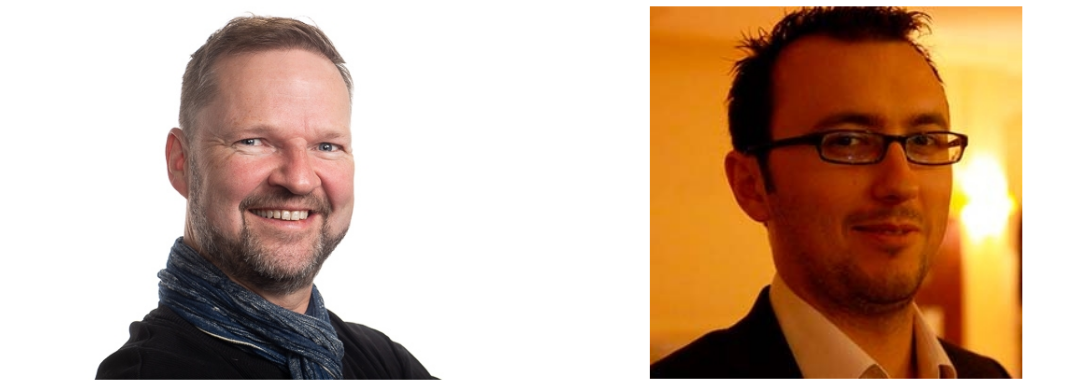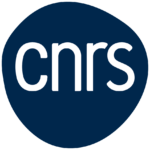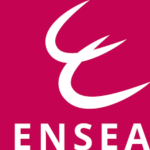
- This event has passed.
Cultural Heritage Seminar | Jon Hardeberg and Nistor Grozavu

The next ETIS Tandem seminar will take place on Wednesday June 18th at 2 pm, in the Curium, at ENSEA and on zoom (link below).
Jon Yngve Hardeberg from the NTNU (Norwegian University of Science and Technology, Colourlab) and Nistor Grozavu (ETIS UMR 8051) will talk about their work on Cultural Heritage, abstracts are given below.
Jon Yngve Hardeberg
NTNU − Norwegian University of Science and Technology,
Colourlab, Department of Computer Science, N-2815 Gjøvik, Norway
Spektralion AS, N-2815 Gjøvik, Norway
Spectral Imaging for Cultural Heritage: Past, Present, and Future
During the last few decades, spectral imaging has proven to be a very useful technology for the precise documentation and non-destructive analysis of tangible cultural heritage objects [1-5]. With spectral imaging we here include various imaging technologies which allow to measure the spectral reflectance of the objects at a large number of spatial locations of the object in one operation. These technologies vary greatly in key parameters such as spatial resolution (number of pixels), spectral resolution (number of channels), cost, and time and complexity required to capture high quality images.
In this talk we will first introduce the principles of spectral imaging, before discussing how this type of imaging can be useful in the field of cultural heritage [3,4]. Then we will present and discuss examples of our recent and ongoing research in this field, for instance on the topics of pigment mapping in paintings [2,5,6,7], hyperspectral analysis of stained glass windows [8], analysis of historical textile fragments from the Viking age, and visualization of hyperspectral images. Finally, considering the challenging task of properly assessing the quality of a spectral image [3,9], we will discuss the question of how many spectral channels we actually need in a spectral imaging system [10,11].
Nistor Grozavu
ETIS UMR 8051, CY Cergy Paris University, ENSEA, CNRS
Using multimodal AI to support the preservation of Cultural Heritage under Climate Change
Heritage materials are increasingly vulnerable to the effects of climate change. Fluctuations in temperature, humidity, and other environmental factors can accelerate the degradation of monuments, yet predicting this weathering remains complex due to the wide range of influencing variables i.e. material properties, conservation conditions, and human activity among them. In this talk, we will explore how artificial intelligence, and in particular multimodal machine learning, can help address this challenge. By integrating diverse types of data i.e. scientific images, in situ sensor readings, and environmental records, we aim to better understand and anticipate material deterioration across time and context. Our work focuses on three French heritage sites: Strasbourg Cathedral, the Bibracte archaeological area, and the Saint-Pierre Chapel. These sites serve as case studies for developing AI models capable to predict a degradation index under different climate scenarios and opens new perspectives for long-term cultural heritage conservation planning.
References
[1] H. Maître, F. Schmitt, J.-P. Crettez, Y. Wu and J. Y. Hardeberg, Spectrophotometric Image Analysis of Fine Art Paintings, Proc. 4th Color Imaging Conference, p. 50-53, Scottsdale, Arizona, 1996
[2] J. Y Hardeberg, S. George, F. Deger, I. Baarstad, and J. E. Palacios, Spectral Scream: Hyperspectral image acquisition and analysis of a masterpiece. In “Public paintings by Edvard Munch and some of his contemporaries. Changes and conservation challenges,” Archetype Publications, London, 2015
[3] S. George, J.Y. Hardeberg, J. Linhares, L. MacDonald, C. Montagner, S. Nascimento, M. Picollo, R. Pillay, T. Vitorino, E. K. Webb, A Study of Spectral Imaging Acquisition and Processing for Cultural Heritage, in “Digital Techniques for Documenting and Preserving Cultural Heritage,” Arc Humanities Press, 2017, p. 100-130
[4] R. Pillay, J.Y Hardeberg, S. George, Hyperspectral Imaging of Art: Acquisition and Calibration Workflows, Journal of the American Institute for Conservation, 58(1-2), 3-15, 2019.
[5] H. Deborah, S. George, J. Y. Hardeberg, Spectral-divergence based pigment discrimination and mapping: A case study on The Scream (1893) by Edvard Munch. Journal of the American Institute for Conservation, 58(1-2), 90-107, 2019
[6] D. J. Mandal, H. Deborah, S. George and J. Y. Hardeberg, “Unsupervised Clustering for Works of Art Using Hyperspectral Imaging: A Case Study on Edvard Munch’s Self-Portrait (1905), 13th Workshop on Hyperspectral Imaging and Signal Processing: Evolution in Remote Sensing (WHISPERS), 2023
[7] N. Eckertz, H. Deborah, J. Y. Hardeberg, and I. C. A. Sandu, Spatially Constrained Hyperspectral Pigment Mapping Using Watershed Segmentation, 14th Workshop on Hyperspectral Imaging and Signal Processing: Evolution in Remote Sensing (WHISPERS) 2024
[8] A. Babini, S. George, T. Lombardo, and J. Y. Hardeberg. Acquisition strategies for in-situ hyperspectral imaging of stained-glass windows: case studies from the Swiss National Museum. Heritage Science, 11:74, 2023
[9] R. Shrestha, R. Pillay, S. George, J. Y. Hardeberg, Quality evaluation in spectral imaging – Quality factors and metrics. Journal of the International Colour Association, 10 p. 22-35, 2014
[10] A. Alsam, D. Connah, J. Hardeberg, Multispectral Imaging: How Many Sensors Do We Need? Journal of Imaging Science and Technology, 2006, pp 45 – 52.
[11] M. Amiri, G. Trumpy, “Is Multispectral enough” An evaluation of the performance of multispectral images in pigment unmixing task,” Proc. London Imaging Meeting, 2024


